Ref.>"【北朝鮮】韓国ドラマを見た10代に懲役12年"
>"【韓国】現代自動車・起亜、営業利益3兆円で新記録…サムスン電子も追い抜いた"
-----------------------------------------
> 韓国史から高句麗・渤海を削除した中国 韓国政府が是正要求=北京の特別展で【ゆっくり解説】
↓(See detail of this article)、産経新聞の記事の翻訳(Translation of an article of The Sankei Shimbun)
Translation; [Hellow from Seroul]. Current address of Sino-S. Korea historical war
>"[ソウルからヨボセヨ]. 韓中歴史戦争の現住所"
> 中朝国境の鴨緑江中流の中国・吉林省集安に古代・高句麗の代表的遺跡「>"広開土王碑"」がある。
> 観光スポットとして韓中双方の観光客でにぎわっているが、数年前、韓国からツアーで出かけた折、現地でガイドの韓国語使用が禁止されているのに驚いた。
The >"Gwanggaeto Stele," a representative ruin of ancient Goguryeo, is located in Ji'an City in Jilin Province, China, in the middle reaches of the Yalu River which is the border between China and N. Korea.
As a tourist spot, it's crowded with tourists from both S. Korea and China. However, a few years ago, when I went there on a tour from S. Korea, I was surprised to have found that the guides there were banned to speak Korean-language.
> 韓中歴史戦争の余波で、高句麗史を中国史の一部とする中国は韓国の影響力排除に懸命なのだ。
> 一方、高句麗史は韓民族の歴史だとする韓国は、教科書や博物館の展示はもちろん、映画やドラマでもそれを強調してきた。
> その一環で国立中央博物館が最近、最新のデジタルプリントで再現した高さ8メートルもの「広開土王碑」の模型(?)を公開し、話題だ。
It means that, due to the aftermath of the Sino-S. Korea historical war, China, which considers Goguryeo history a part of Chinese history, has been trying hard to eliminate S. Korea's influence.
On the other hand, S. Korea, which says that Goguryeo history is the history of the Korean ethnic group, has emphasized it not only in textbooks and museum exhibits, but also in movies and dramas.
As part of this effort, the National Museum of Korea recently unveiled an 8 m in height model (?) of the "Gwanggaeto Stele" reproduced using the stae of the art digital printing technology, which has become a hot topic.
> この石碑は高句麗王の業績を記したものだが、百済や新羅のほか「倭(日本)」も登場、4~5世紀の東アジア関係の記録として重視されてきた。
> 日本では在日韓国人学者が「明治時代に日本の軍人が碑文を日本に有利に書き換えた」と改竄説を発表し一時、内外で広く信じられた。
> よくある〝日本悪者〟論の一つだったが今回、博物館の学芸員に「あの話は今どうですか?」と聞くと、「あれは後に中国によって否定されたし学術的には支持者はいません。一部に俗説として残っているようですが」ということで、ホッとした。
This stone monument records the achievements of the Goguryeo king (* Gwanggaeto the Great). In addition to Baekje and Silla, "Wa (Japan)" also appears in it. It has been therefore valued as a record of East Asian relations from the 4th to 5th centuries.
In Japan, ban-jjokbari scholar (* Lee Jin-hui) released the theory of falsification that "During the Meiji period, Japanese serviceman (* Kageaki Sakō) re-write the inscription in favor of Japan," which was widely believed at home and abroad for a while.
This was one of the common arguments that "Japan is the bad guy" theory. However, this time, I questioned a museum curator that "What about the matter in nowadays?", and I was relieved to have an answer that "That was later denied by China, there are therefore no academic supporters for it. Even though it seems that there are some to support it as a folklore."

最新の画像[もっと見る]
-
![翻訳:[ソウルからヨボセヨ]. 韓中歴史戦争の現住所](https://blogimg.goo.ne.jp/image/upload/f_auto,q_auto,t_image_square_m/v1/user_image/3d/02/46923dafa728dde7492822ed73ad1551.jpg) 翻訳:[ソウルからヨボセヨ]. 韓中歴史戦争の現住所
5ヶ月前
翻訳:[ソウルからヨボセヨ]. 韓中歴史戦争の現住所
5ヶ月前
-
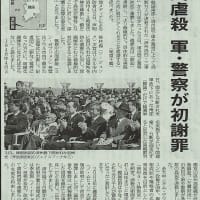 翻訳;新藤かな(港区区議会議員, 無所属)の X (on '23. 12/11)
7ヶ月前
翻訳;新藤かな(港区区議会議員, 無所属)の X (on '23. 12/11)
7ヶ月前
-
 翻訳:「朝鮮学校の存在知って」 無償化求める裁判記録の上映会
8ヶ月前
翻訳:「朝鮮学校の存在知って」 無償化求める裁判記録の上映会
8ヶ月前
-
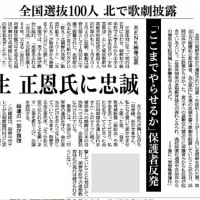 翻訳:「朝鮮学校の存在知って」 無償化求める裁判記録の上映会
8ヶ月前
翻訳:「朝鮮学校の存在知って」 無償化求める裁判記録の上映会
8ヶ月前
-
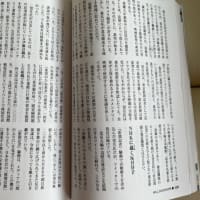 翻訳;崔碩栄の X(on '23. 9/12)
9ヶ月前
翻訳;崔碩栄の X(on '23. 9/12)
9ヶ月前
-
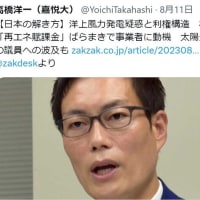 翻訳:高浜2号機の燃料装填完了 関西電力、9月再稼働へ
11ヶ月前
翻訳:高浜2号機の燃料装填完了 関西電力、9月再稼働へ
11ヶ月前
-
![翻訳:[ソウルからヨボセヨ]. アサヒの大逆襲](https://blogimg.goo.ne.jp/image/upload/f_auto,q_auto,t_image_square_m/v1/user_image/40/c2/8f01d7d86ad79316f7e46787892ac0e1.jpg) 翻訳:[ソウルからヨボセヨ]. アサヒの大逆襲
1年前
翻訳:[ソウルからヨボセヨ]. アサヒの大逆襲
1年前
-
![翻訳:[ソウルからヨボセヨ]. アサヒの大逆襲](https://blogimg.goo.ne.jp/image/upload/f_auto,q_auto,t_image_square_m/v1/user_image/6e/77/246585ce51dc216cac7a9d5a930b8e5a.jpg) 翻訳:[ソウルからヨボセヨ]. アサヒの大逆襲
1年前
翻訳:[ソウルからヨボセヨ]. アサヒの大逆襲
1年前
-
 翻訳:「レイプ計画立てている」と女性に脅迫文 元共産党千葉県幹部を起訴
1年前
翻訳:「レイプ計画立てている」と女性に脅迫文 元共産党千葉県幹部を起訴
1年前
-
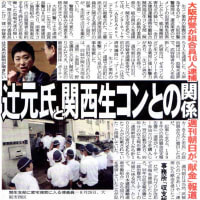 翻訳:関西生コン支部の幹部 威力業務妨害で実刑判決 大津地裁
1年前
翻訳:関西生コン支部の幹部 威力業務妨害で実刑判決 大津地裁
1年前















※コメント投稿者のブログIDはブログ作成者のみに通知されます